
Super Mario World, known in Japanese marketing as Super Mario World: Super Mario Bros. 4, is a platform game developed by Nintendo EAD and published by Nintendo for the Super Nintendo Entertainment System (SNES). It was released in Japan in 1990, North America in 1991 and Europe and Australia in 1992. The player controls Mario on his quest to save Princess Peach and Dinosaur Land from the series' antagonist Bowser and the Koopalings. The gameplay is similar to that of earlier Super Mario games; players control Mario through a series of levels in which the goal is to reach the goalpost at the end.

Super Mario World 2: Yoshi's Island is a 1995 platform game developed and published by Nintendo for the Super Nintendo Entertainment System (SNES). It is the sequel follow-up to Super Mario World. The player controls Yoshi, a friendly dinosaur, on a quest to reunite baby Mario with his brother Luigi, who has been kidnapped by Kamek. As a Super Mario series platformer, Yoshi runs and jumps to reach the end of the level while solving puzzles and collecting items with Mario's help. The game has a hand-drawn aesthetic and was the first in the franchise to have Yoshi as its main character, where it introduces his signature flutter jump and egg spawning abilities.

EarthBound, released in Japan as Mother 2: Gīgu no Gyakushū, is a role-playing video game developed by Ape Inc. and HAL Laboratory and published by Nintendo for the Super Nintendo Entertainment System. The second entry in the Mother series, it was first released in Japan in August 1994, and in North America in June 1995. A port for the Game Boy Advance developed by Pax Softnica, bundled with Mother (1989) as Mother 1+2, was released only in Japan in 2003. As Ness and his party of Paula, Jeff and Poo, the player travels the world to collect melodies from eight Sanctuaries in order to defeat the universal cosmic destroyer Giygas.

Secret of Mana, originally released in Japan as Seiken Densetsu 2, is a 1993 action role-playing game developed and published by Square for the Super Nintendo Entertainment System. It is the sequel to the 1991 game Seiken Densetsu, released in North America as Final Fantasy Adventure and in Europe as Mystic Quest, and it was the first Seiken Densetsu title to be marketed as part of the Mana series rather than the Final Fantasy series. Set in a high fantasy universe, the game follows three heroes as they attempt to prevent an empire from conquering the world with the power of an ancient flying fortress.
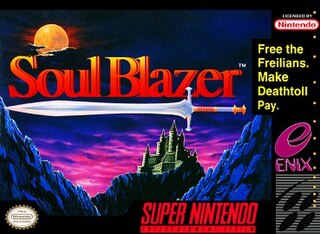
Soul Blazer, released in Japan as Soul Blader, is an action role-playing video game developed by Quintet and published by Enix for the Super Nintendo Entertainment System. It was released in 1992 in Japan and North America, but not released in Europe until 1994.
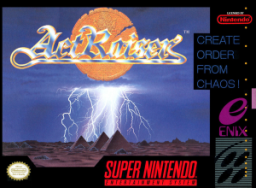
ActRaiser is a 1990 video game developed by Quintet and published by Enix for the Super Nintendo Entertainment System, It combines traditional side-scrolling platforming and sections with city building and god game elements. A sequel, ActRaiser 2, was released for the Super NES in 1993. In 2007, ActRaiser became available on the Wii's Virtual Console download service in Europe, North America, and Japan. A version of the game was also released for European mobile phones in 2004. A remake, Actraiser Renaissance, was released for several platforms in 2021.

Terranigma is a 1995 action role-playing game developed by Quintet for the Super Nintendo Entertainment System (SNES), with manga artist Kamui Fujiwara acting as the character designer. The game tells the story of the Earth's resurrection by the hands of a boy named Ark, and its progress from the evolution of life to the present day. The game is considered the third and final entry in an unofficial trilogy of action RPGs created by Quintet, also including Soul Blazer (1992) and Illusion of Gaia (1993).

E.V.O.: Search for Eden is a 1992 action-adventure game developed by Almanic Corporation and published by Enix for the Super NES. Combining traditional platforming mechanics with experience and leveling mechanics originating from role playing games, E.V.O.: Search for Eden involves the player navigating a creature through a number of side-scrolling levels while undergoing bodily evolution to cope with ever-changing environments. It is heavily based on Almanic's original title, 46 Okunen Monogatari ~The Shinka Ron~, released in Japan in 1990 for the PC-9801.
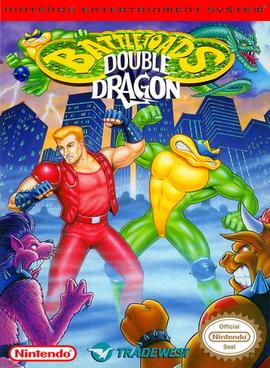
Battletoads/Double Dragon is a 1993 beat 'em up developed by Rare and published by Tradewest. It was originally released for the Nintendo Entertainment System and later ported to the Mega Drive/Genesis, Super NES, and Game Boy. Retro-bit Publishing has re-released the 8-bit NES version in early 2022 with plans to release the 16-bit versions later this year.

Kirby Super Star, released as Kirby's Fun Pak in PAL regions, is an anthology platform video game developed by HAL Laboratory and published by Nintendo for the Super Nintendo Entertainment System in 1996. It is part of the Kirby series of video games by HAL Laboratory. The game was advertised as a compilation featuring eight games: seven short subsections with the same basic gameplay, and two minigames.

Robotrek, known in Japan as Slapstick, is a role-playing video game (RPG) for the Super Nintendo Entertainment System (SNES). It was developed by Quintet and published by Enix in both Japan and North America in 1994. Set on the fictional planet Quintenix, the game puts the player in control of a budding robotics expert who is the son of a famous inventor.

Quintet Co., Ltd. was a Japanese video game developer, founded in April 1989. The company name is derived from musical terminology, as well as five elements of game design—planning, graphics, sound, programming and producing. Quintet was most active in the 1990s, when it had a strong relationship with Enix ; the company was also a member of the GD-NET group of Sega Saturn developers. Quintet has not been active since the 2000s and is likely defunct.
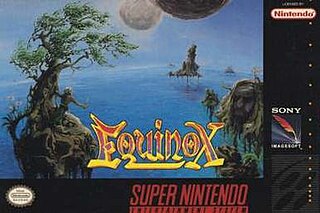
Equinox is an action adventure puzzle video game developed by Software Creations and published by Sony Imagesoft for the Super NES. A sequel to Solstice (1990) for the Nintendo Entertainment System, Equinox depicts Glendaal saving his father Shadax, the previous game's playable character, from the imprisonment of Sonia, Shadax's apprentice. The player acts as Glendaal, exploring 458 rooms in eight underground dungeons. The player collects 12 blue orb tokens while solving puzzles, killing enemies, collecting keys, navigating platforms and blocks, and battling bosses. It continues Solstice's isometric puzzle game style, with greater emphasis on action adventure and Mode 7 overworld map.

Mega Man X3, known as Rockman X3 (ロックマンX3) in Japan, is a video game released by Capcom for the Super Nintendo Entertainment System (SNES). The game was originally released in Japan on December 1, 1995, and later in North American and PAL regions in 1996. It is the third game in the Mega Man X series and the last to appear on the SNES. Mega Man X3 takes place in a fictional future in which the world is populated by humans and intelligent robots called "Reploids". Like their human creators, some Reploids involve themselves in destructive crime and are labelled as "Mavericks". After twice defeating the Maverick leader Sigma, the heroes X and Zero must battle a Reploid scientist named Dr. Doppler and his utopia of Maverick followers.
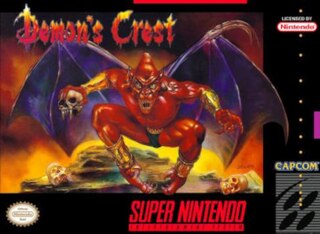
Demon's Crest, known in Japan as Demon's Blazon, is a side-scrolling platform video game developed and published by Capcom for the Super Nintendo Entertainment System. It is the third video game starring Firebrand, following Gargoyle's Quest and Gargoyle's Quest II.

Super Bomberman 2 is a video game developed by Produce! and Hudson Soft and released on the Super Nintendo Entertainment System. It was released in Japan on April 28, 1994, in North America later the same year, and in Europe on February 23, 1995.

BlaZeon is a horizontally scrolling shoot 'em up arcade game released by Atlus in 1992 and was ported to the Super Nintendo Entertainment System in the same year. The game's most distinguishable feature is that players come equipped with a device that allows them to freeze and control certain robots.

Double Dragon V: The Shadow Falls is a fighting game developed by Leland Interactive Media and published by Tradewest for the Super Nintendo Entertainment System and Sega Genesis in 1994. A port for the Atari Jaguar developed by Telegames was released the following year. It is an American-produced sequel to the Double Dragon series by Technōs Japan, who had little to no credited involvement in the development of the game outside of licensing the IP to the publisher outside Japan.

Contra III: The Alien Wars is a 1992 run and gun video game developed and published by Konami for the Super Nintendo Entertainment System (SNES). It is the third home console entry in the Contra series after Contra (1988) and Super C (1990) for the Nintendo Entertainment System (NES). In PAL regions, it was retitled Super Probotector: Alien Rebels and the player characters were replaced with robots. The player is tasked with fighting off an alien invasion of Earth across six stages. Four stages feature side-scrolling action traditional to the series while two are presented from an overhead perspective. It is the first Contra title to have been directed by Nobuya Nakazato who later directed other games in the series. He designed Contra III to feature more comical elements, a more cinematic soundtrack, and tighter stage design than its predecessors.

Unholy Night: The Darkness Hunter is a 2017 fighting game developed by Foxbat Corporation with assistance from Nu-Gaia and published exclusively for the Super Nintendo Entertainment System in Japan by BlazePro, North America by Retroism and Europe by JoshProd. Set during modern times, the game follows six fighters from three groups as they face-off in a conflict to confront the vampire Katatonia. Its gameplay consists of one-on-one fights, with a main three-button configuration, featuring special moves and four playable modes.





















